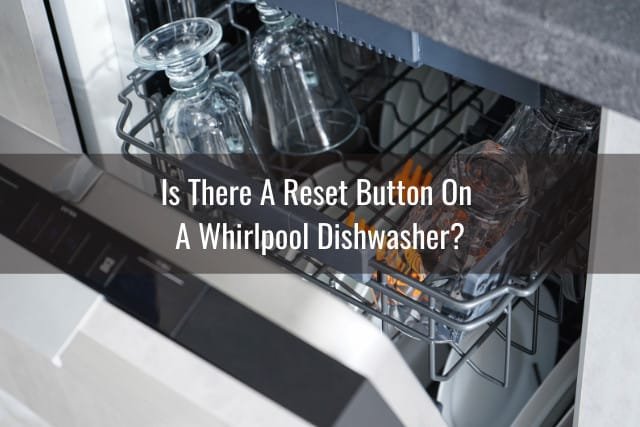
Imagine you’re about to host a dinner party. You’ve loaded your Whirlpool dishwasher, hoping for sparkling plates, only to face error code E1. This code signifies that your dishwasher thinks it’s not getting enough water. It might feel like your appliance is suddenly speaking a foreign language, or like getting an unexpected flat tire right before a road trip. But fear not, there’s no need to call in a repair wizard just yet. With a few simple steps, you can tackle this hiccup head-on.
Let’s walk through the process of resetting your Whirlpool dishwasher after seeing this pesky E1 message. We’ll break it down as straightforwardly as possible, like explaining how to boil water. Ready? Let’s get cooking!
Understanding Error Code E1 on Whirlpool Dishwashers
First things first, let’s put on our detective hats and understand what this E1 error code truly means. Your dishwasher isn’t throwing this error just for fun; it’s an indication that there’s a disruption in the water supply. Imagine trying to fill a bucket under a trickling tap—it’s frustrating and ineffective. Similarly, your dishwasher relies on a steady water supply to do its job correctly.
You might be curious, “Why is my dishwasher having water issues?” Good question! There are several reasons why this could happen. It could be due to a problem with the water inlet valve, which is like the gateway for water entering your dishwasher. If this valve is stuck or obstructed, your dishwasher can’t get enough water, leading to the E1 error. Another possibility is a kinked or blocked water line, much like a hose that’s been bent one too many times.
The consequences of this error can be more than just annoying. Dishes don’t get cleaned properly, which means more time spent doing them by hand— and nobody wants that! Additionally, ignoring the issue can lead to more complex problems down the line, like damage to the appliance or increased water bills due to leaks. So, let’s nip this problem in the bud before washing dishes becomes your full-time job.
Steps to Reset Your Whirlpool Dishwasher
Alright, now that we know the “why,” let’s tackle the “how.” Resetting your Whirlpool dishwasher to address the E1 error isn’t as complicated as trying to solve a Rubik’s cube. Follow these steps, and you’ll be on your way to a fully functioning dishwasher again.
The first step is to turn off the dishwasher and unplug it from the power source. This step is crucial for your safety and also gives the dishwasher a chance to ‘think about what it’s done,’ so to speak. Once disconnected, wait for about a minute. This brief pause allows the machine to reset itself, almost like how a quick nap can refresh your mind.
Next, take a closer look at the water inlet valve and the water supply. This is much like inspecting a leaky faucet to ensure everything is in working order. Check if the water supply hose is kinked or blocked, and if the inlet valve seems obstructed. If you find any blockages, clear them out carefully. In some cases, this might just involve straightening a bent hose or cleaning the valve.
Once you’ve ensured that water can flow freely, plug the dishwasher back in and turn it on. Run a short test cycle to see if the error has been resolved. If all goes well, you should be greeted with the familiar whir of a dishwasher doing its job. If E1 decides to appear again, it might be time to consult a professional to dive deeper into the issue.
Preventive Measures to Avoid Future E1 Errors
Now that you’ve mastered resetting your dishwasher, let’s talk prevention. It’s always a good idea to keep your appliances running smoothly with a bit of ongoing maintenance. Picture it like taking care of your car—it needs regular check-ups to keep running smoothly.
Make it a habit to regularly check the water lines for kinks or blockages. Similar to ensuring there are no leaves clogging your gutters, keeping the water pathways clear will help prevent interruptions in the water supply. Additionally, clean the filters and the inlet valve periodically to avoid build-up that could lead to future problems.
Another tip is to ensure the dishwasher is level. An uneven dishwasher can cause water distribution issues. All it takes is placing a level tool on top of the dishwasher to double-check it’s not tilted. Adjust the legs accordingly if you find it’s not quite right. It sounds simplistic, but this small step can save you from headaches down the road.
Finally, be mindful of how you load the dishwasher. Overloading can not only prevent dishes from getting clean, but it can also put stress on the appliance, leading to potential malfunctions. Think of it like packing a suitcase—overstuffing leads to wrinkles and broken zippers, neither of which are fun.
By following these steps and tips, you’re well on your way to keeping your Whirlpool dishwasher in tip-top shape, long after the E1 error is just a distant memory.